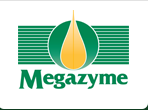
Megazyme/AZCL普鲁兰/I-AZPUL/3克
商品编号:
I-AZPUL
品牌:
Megazyme INC
市场价:
¥3288.00
美元价:
1972.80
产品分类:
反应底物
公司分类:
Reaction_substrate
联系Q Q:
3392242852
电话号码:
4000-520-616
电子邮箱:
info@ebiomall.com
商品介绍
HighpuritydyedandcrosslinkedinsolubleAZCL-Pullulanforidentificationofenzymeactivitiesinresearch,microBIOLOGicalenzymeassaysandinvitrodiagnosticanalysis.
Substratefortheassayoflimit-dextrinase(pullulanase).
Measurementofthecontentoflimit-dextrinaseincerealflours.
McCleary,B.V.(1992).CarbohydrateResearch,227,257-268.
LinktoArticle
ReadAbstract
Proceduresforthequantitativeextraction,activation,andassayoflimit-dextrinaseincerealflourshavebeendeveloped.Extractionandactivationrequireincubationinbuffercontaining20mmcysteineforatleast16horwith25mmdithiothreitolfor5h.Activityisassayedwithasoluble,dyedsubstrate(Red-Pullulan)oraninsoluble,dyed,andcross-linkedsubstrate(Azurine-CL-Pullulan)whichisdispensedintabletform(Limit-DextriZymetablets).
AnewThermoactivepullulanasefromDesulfurococcusmucosus:cloning,sequencing,purification,andcharacterizationoftherecombinantenzymeafterexpressioninBacillussubtilis.
Duffner,F.,Bertoldo,C.,Andersen,J.T.,Wagner,K.&Antranikian,G.(2000).JournalofBacteriology,182(22),6331-6338.
LinktoArticle
ReadAbstract
ThegeneencodingathermoactivepullulanasefromthehyperthermophilicanaerobicarchaeonDesulfurococcusmucosus(apuA)wasclonedinEscherichiacoliandsequenced.apuAfromD.mucosusshowed45.4%pairwiseaminoacididentitywiththepullulanasefromThermococcusaggregansandcontainedthefourregionsconservedamongallamylolyticenzymes.apuAencodesaproteinof686aminoacidswitha28-residuesignalpeptideandhasapredictedmassof74kDaaftersignalcleavage.TheapuAgenewasthenexpressedinBacillussubtilisandsecretedintotheculturefluid.ThisisoneofthefirstreportsonthesuccessfulexpressionandpurificationofanarchaealamylopullulanaseinaBacillusstrain.Thepurifiedrecombinantenzyme(rapuDm)iscomposedoftwosubunits,eachhavinganestimatedmolecularmassof66kDa.Optimalactivitywasmeasuredat85°CwithinabroadpHrangefrom3.5to8.5,withanoptimumatpH5.0.DivalentcationshavenoinfluenceonthestABIlityoractivityoftheenzyme.RapuDmwasstableat80°Cfor4handexhibitedahalf-lifeof50minat85°C.Byhigh-pressureliquidchromatographyanalysisitwasobservedthatrapuDmhydrolyzedα-1,6glycosidiclinkagesofpullulan,producingmaltotriose,andalsoα-1,4glycosidiclinkagesinstarch,amylose,amylopectin,andcyclodextrins,withmaltotrioseandmaltoseasthemainproducts.SincethethermoactivepullulanasesknownsofarfromArchaeaarenotactiveoncyclodextrinsandareinfactinhibitedbythesecyclicoligosaccharides,theenzymefromD.mucosusshouldbeconsideredanarchaealpullulanasetypeIIwithawidersubstratespecificity.
Diversityofmoderatelyhalophilicbacteriaproducingextracellularhydrolyticenzymes.
Sánchez‐Porro,C.,Martin,S.,Mellado,E.&Ventosa,A.(2003).JournalofAppliedMicrobiology,94(2),295-300.
LinktoArticle
ReadAbstract
Aims:Theaimofthisstudywastodeterminethediversityofmoderatelyhalophilicbacteriawithhydrolaseactivities.MethodsandResults:ScreeningbacteriafromdifferenthypersalineenvironmentsinSouthSpainledtotheisolationofatotalof122moderatelyhalophilicbacteriaabletoproducedifferenthydrolases(amylases,DNases,lipases,proteasesandpullulanases).Thesebacteriaareabletogrowoptimallyinmediawith5–15%saltsandinmostcasesupto20–25%salts.Incontrasttostrainsbelongingtopreviouslydescribedspecies,thatshowedverylittlehydrolaseactivities,environmentalisolatesproducedagreatvarietyofhydrolases.Thesestrainswereidentifiedasmembersofthegenera:Salinivibrio(55strains),Halomonas(25strains),Chromohalobacter(twostrains),Bacillus-Salibacillus(29strains),Salinicoccus(twostrains)andMarinococcus(onestrain),aswellaseightnon-identifiedisolates.Conclusions:Moderatelyhalophilicbacteriaareasourceofhydrolyticenzymessuchasamylases,DNases,lipases,proteasesandpullulanases.SignificanceandImpactoftheStudy:Althoughmostculturecollectionstrainsarenotabletoproducehydrolases,ithasbeenshownthatenvironmentalisolatescanproducethesepotentiallybiotechnologicalimportantenzymes.
Analysisandcharacterizationofcultivableextremophilichydrolyticbacterialcommunityinheavy‐metal‐contaminatedsoilsfromtheAtacamaDesertandtheirbiotechnologicalpotentials.
Moreno,M.L.,Piubeli,F.,Bonfa,M.R.L.,García,M.T.,Durrant,L.R.&Mellado,E.(2012).JournalofAppliedMicrobiology,113(3),550-559.
LinktoArticle
ReadAbstract
Aims:Toisolateandcharacterizethecultivablecommunityofhydrolaseproducers(amylase,protease,lipase,DNase,xylanaseandpullulanase)inhabitingheavy-metal-contaminatedsoilsinextremeconditionsfromtheAtacamaDesert.MethodsandResults:Atotalof25bacterialstrainsshowinghydrolyticactivitieshavebeenselectedincludinghalotolerants,extremelyhalotolerantsandmoderatehalophiles.MosthydrolaseproducerswereassignedtothefamilyBacillaceae,belongingtothegeneraBacillus(ninestrains),Halobacillus(sevenstrains)andThalassobacillus(fivestrains)andfourisolateswererelatedtomembersofthefamiliesPseudomonadaceae,HalomonadaceaeandStaphylococcaceae.Theselectedstrainswerethencharacterizedfortheirtolerancepatterntosixheavymetals,measuredasminimalinhibitoryconcentrations(MICs).Conclusions:Thediversityfoundinthecultivablebacterialcommunityanalysedismorelimitedthanthatdetectedinotherecologicalstudiesowingtotherestrictiveconditionsusedinthescreening.ThedominantbacteriawereFirmicutesandparticularly,speciesrelatedtothegenusBacillus.SignificanceandImpactoftheStudy:Thisstudyisfocusedonthecharacterizationofextremophilichydrolyticbacteria,providingcandidatesasasourceofnovelenzymeswithbiotechnologicalapplications.
Diversityandcold-activehydrolyticenzymesofculturablebacteriaassociatedwithArcticseaice,Spitzbergen.
Groudieva,T.,Kambourova,M.,Yusef,H.,Royter,M.,Grote,R.,Trinks,H.&Antranikian,G.(2004).Extremophiles,8(6),475-488.
LinktoArticle
ReadAbstract
ThediversityofculturablebacteriaassociatedwithseaicefromfourpermanentlycoldfjordsofSpitzbergen,ArcticOcean,wasinvestigated.Atotalof116psychrophilicandpsychrotolerantstrainswereisolatedunderaerobicconditionsat4°C.TheisolatesweregroupedusingamplifiedrDNArestrictionanalysisfingerprintingandidentifiedbypartialsequencingof16SrRNAgene.Thebacterialisolatesfellinfivephylogeneticgroups:subclassesαandγofProteobacteria,theBacillus–Clostridiumgroup,theorderActinomycetales,andtheCytophaga–Flexibacter–Bacteroides(CFB)phylum.Over70%oftheisolateswereaffiliatedwiththeProteobacteriaγsubclass.Basedonphylogeneticanalysis(<98% sequence="" similarity),="" over="" 40%="" of="" arctic="" isolates="" represent="" potentially="" novel="" species="" or="" genera.="" most="" of="" the="" isolates="" were="" psychrotolerant="" and="" grew="" optimally="" between="" 20="" and="" 25°c.="" only="" a="" few="" strains="" were="" psychrophilic,="" with="" an="" optimal="" growth="" at="" 10–15°c.="" the="" majority="" of="" the="" bacterial="" strains="" were="" able="" to="" secrete="" a="" broad="" range="" of="" cold-active="" hydrolytic="" enzymes="" into="" the="" medium="" at="" a="" cultivation="" temperature="" of="" 4°c.="" the="" isolates="" that="" are="" able="" to="" degrade="" proteins="" (skim="" milk,="" casein),="" lipids="" (olive="" oil),="" and="" polysaccharides="" (starch,="" pectin)="" account="" for,="" respectively,="" 56,="" 31,="" and="" 21%="" of="" sea-ice="" and="" seawater="" strains.="" the="" temperature="" dependences="" for="" enzyme="" production="" during="" growth="" and="" enzymatic="" activity="" were="" determined="" for="" two="" selected="" enzymes,="" α-amylase="" and="" β-galactosidase.="" interestingly,="" high="" levels="" of="" enzyme="" productions="" were="" measured="" at="" growth="" temperatures="" between="" 4="" and="" 10°c,="" and="" almost="" no="" production="" was="" detected="" at="" higher="" temperatures="" (20–30°c).="" catalytic="" activity="" was="" detected="" even="" below="" the="" freezing="" point="" of="" water="" (at="" −5°c),="" demonstrating="" the="" unique="" properties="" of="" these="" enzymes.="">
Tenacibaculumskagerrakensesp.nov.,amarinebacteriumisolatedfromthepelagiczoneinSkagerrak,Denmark.
Frette,L.,Jørgensen,N.O.G.,Irming,H.&Kroer,N.(2004).InternationalJournalofSystematicandEvolutionaryMicrobiology,54(2),519-524.
LinktoArticle
ReadAbstract
AnumberofbacteriawereisolatedfromseawaterinSkagerrak,Denmark,at30mdepth.Twooftheisolates,strainsD28andD30T,belongedtotheFlavobacteriaceaewithintheCytophaga–Flavobacterium–Bacteroidesgroup.Sequencingof16SrRNAgenesofthetwostrainsindicatedstronglythattheybelongedtothegenusTenacibaculumandthattheyshowedgreatestsimilaritytothespeciesTenacibaculumamylolyticumandTenacibaculummesophilum.DNA–DNAhybridizationvalues,DNAbasecompositionandphenotypiccharacteristicsseparatedtheSkagerrakstrainsfromtheotherspecieswithinTenacibaculum.Thus,itisconcludedthatthestrainsbelongtoanovelspecieswithinthegenusTenacibaculum,forwhichthenameTenacibaculumskagerrakensesp.nov.isproposed,withstrainD30T(=ATCCBAA-458T=DSM14836T)asthetypestrain.
Purificationandcharacterisationoftwoextremelyhalotolerantxylanasesfromanovelhalophilicbacterium.
Wejse,P.L.,Ingvorsen,K.&Mortensen,K.K.(2003).Extremophiles,7(5),423-431.
LinktoArticle
ReadAbstract
Thepresentworkreportsforthefirsttimethepurificationandcharacterisationoftwoextremelyhalotolerantendo-xylanasesfromanovelhalophilicbacterium,strainCL8.Purificationofthetwoxylanases,Xyl1and2,wasachievedbyanionexchangeandhydrophobicinteractionchromatography.Theenzymeshadrelativemolecularmassesof43kDaand62kDaandpIof5.0and3.4respectively.StimulationofactivitybyCa+2,Mn+2,Mg+2,Ba+2,Li+2,NaN3,andisopropanolwasobserved.TheKmandVmaxvaluesdeterminedforXyl1with4-O-methyl-D-glucuronoxylanare5mg/mland125,000nkat/mgrespectively.ThecorrespondingvaluesforXyl2were1mg/mland143,000nkat/mgprotein.Xylobioseandxylotriosewerethemajorendproductsforbothendoxylanases.ThexylanaseswerestableatpH4–11showingpHoptimaaroundpH6.Xyl1showsmaximalactivityat60°C,Xyl2at65°C(at4MNaCl).Thexylanasesshowedhightemperaturestabilitywithhalf-livesat60°Cof97minand192minrespectively.Bothxylanasesshowedoptimalactivityat1MNaCl,butsubstantialactivityremainedforbothenzymesat5MNaCl.
Bacillusplakortidissp.nov.andBacillusmurimartinisp.nov.,novelalkalitolerantmembersofrRNAgroup6.
Borchert,M.S.,Nielsen,P.,Graeber,I.,Kaesler,I.,Szewzyk,U.,Pape,T.,Antranikian,G.&Schäfer,T.(2007).InternationalJournalofSystematicandEvolutionaryMicrobiology,57(12),2888-2893.
LinktoArticle
ReadAbstract
TheGram-positive,alkali-andsalt-tolerantmarinebacteriumstrainP203Tisdescribedtogetherwithitsclosestphylogeneticneighbour,terrestrialisolateLMG21005T.StrainP203TwasisolatedfrommaterialfromthespongePlakortissimplexthatwasobtainedfromtheSula-Ridge,NorwegianSea.StrainLMG21005TwasanundescribedstrainthatwasisolatedfromachurchwallmuralinGermany.StrainsP203TandLMG21005TwereidentifiedasnovelalkalitolerantmembersoftheBacillusrRNAgroup6witha16SrRNAgenesequencesimilarityof99.5 %.Theclosestdescribedneighbour,BacillusgibsoniiDSM8722T,showed99.0 %genesequencesimilaritywithP203Tand98.8 %similaritywithstrainLMG21005T.Despitethehigh16SrRNAgenesequencesimilarity,DNA–DNAcross-hybridizationrevealedonly25.8–34.1 %similarityamongstthethreestrains.TheDNAG+Ccontentswere41.1 mol%forstrainP203Tand39.6 mol%forstrainLMG21005T.BothstrainsgrewwellbetweenpH7andpH11.StrainP203Tshowedgrowthatmoderatetemperatures(from4to30°C)andinthepresenceofupto12 %(w/v)NaClatpH9.7,whereasstrainLMG21005Twasnotsalttolerant(upto4 %NaCl)andnogrowthwasobservedat4°C.ThemajorfattyacidsofstrainsP203T,LMG21005TandthetypestrainofB.gibsoniiwerethesaturatedterminallymethyl-branchedcompoundsiso-C15 : 0(19.8,15.6and28.0 %,respectively)andanteiso-C15 : 0(57.1,48.6and45.2 %,respectively).PhysiologicalandbiochemicaltestsallowedgenotypicandphenotypicdifferentiationofstrainsP203TandLMG21005TfromthesixrelatedBacillusspecieswithvalidlypublishednamesandsupportedtheproposaloftwonovelspecies,Bacillusplakortidis[typestrainP203T(=DSM19153T=NCIMB14288T)]andBacillusmurimartini[typestrainLMG21005T(=NCIMB14102T)].
Cloning,sequencing,andcharacterizationofaheat-andalkali-stabletypeIpullulanasefromAnaerobrancagottschalkii.
Bertoldo,C.,Armbrecht,M.,Becker,F.,Schäfer,T.,Antranikian,G.&Liebl,W.(2004).AppliedandEnvironmentalMicrobiology,70(6),3407-3416.
LinktoArticle
ReadAbstract
ThegeneencodingatypeIpullulanasewasidentifiedfromthegenomesequenceoftheanaerobicthermoalkaliphilicbacteriumAnaerobrancagottschalkii.Inaddition,thehomologousgenewasisolatedfromagenelibraryofAnaerobrancahorikoshiiandsequenced.Theproteinsencodedbythesetwogenesshowed39%aminoacidsequenceidentitytothepullulanasesfromthethermophilicanaerobicbacteriaFervidobacteriumpennivoransandThermotogamaritima.ThepullulanasegenefromA.gottschalkii(encoding865aminoacidswithapredictedmolecularmassof98kDa)wasclonedandexpressedinEscherichiacolistrainBL21(DE3)sothattheproteindidnothavethesignalpeptide.Accordingly,themolecularmassofthepurifiedrecombinantpullulanase(rPulAg)was96kDa.PullulanhydrolysisactivitywasoptimalatpH8.0and70°C,andunderthesephysicochemicalconditionsthehalf-lifeofrPulAgwas22h.ByusinganalternativeexpressionstrategyinE.coliTuner(DE3)(pLysS),thepullulanasegenefromA.gottschalkii,includingitssignalpeptide-encodingsequence,wascloned.Inthiscase,thepurifiedrecombinantenzymewasatruncated70-kDaform(rPulAg′).TheN-terminalsequenceofpurifiedrPulAg′wasfound252aminoacidsdownstreamfromthestartsite,presumablyindicatingthattherewasalternativetranslationinitiationorN-terminalproteasecleavagebyE.coli.Interestingly,mostofthephysicochemicalpropertiesofrPulAg′wereidenticaltothoseofrPulAg.Bothenzymesdegradedpullulanviaanendo-typemechanism,yieldingmaltotrioseasthefinalproduct,andhydrolyticactivitywasalsodetectedwithamylopectin,starch,β-limiteddextrins,andglycogenbutnotwithamylose.ThissubstratespecificityistypicaloftypeIpullulanases.rPulAgwasinhibitedbycyclodextrins,whereasadditionofmono-orbivalentcationsdidnothaveastimulatingeffect.Inaddition,rPulAg′wasstableinthepresenceof0.5%sodiumdodecylsulfate,20%Tween,and50%TritonX-100.ThepullulanasefromA.gottschalkiiisthefirstthermoalkalistabletypeIpullulanasethathasbeendescribed.
Pseudoalteromonasarcticasp.nov.,anaerobic,psychrotolerant,marinebacteriumisolatedfromSpitzbergen.
AlKhudary,R.,Stößer,N.I.,Qoura,F.&Antranikian,G.(2008).InternationalJournalofSystematicandEvolutionaryMicrobiology,58(9),2018-2024.
LinktoArticle
ReadAbstract
Anovelaerobic,psychrotolerantmarinebacteriumwasisolatedat4°CfromseawatersamplescollectedfromSpitzbergenintheArctic.Thestrainwasapolar-flagellated,Gram-negativebacteriumthatgrewoptimallyat10–15°CandpH7–8inmediacontaining2–3 %NaCl(w/v),usingvariouscarbohydratesandorganicacidsassubstrates.Themainfattyacidcomponentsincluded16 : 0(12.7 %oftotalfattyacids),straight-chainsaturatedfattyacidmethylester(FAME)and16 : 1ω7c(40.2 %)monounsaturatedFAME.Phylogeneticanalysisrevealedacloserelationship(99 %16SrRNAgenesequencesimilarity)betweenthenovelisolateandPseudoalteromonaselyakoviiKMM162TandsomeotherspeciesofthegenusPseudoalteromonas.TheDNAG+Ccontentofthenovelstrainwas39mol%.DNA–DNAhybridizationshowedonly47.6 %DNA–DNArelatednesswithP.elyakoviiKMM162T,44.2 %withPseudoalteromonasdistinctaKMM638Tand22.6 %withPseudoalteromonasnigrifaciensNCIMB8614TBasedonphylogeneticandphenotypiccharacteristics,thisisolaterepresentsanovelspeciesofthegenusPseudoalteromonasforwhichthenamePseudoalteromonasarcticaisproposed;thetypestrainisA37-1-2T(=LMG23753T=DSM18437T).
MiningDictyoglomusturgidumforenzymaticallyactivecarbohydrases.
Brumm,P.,Hermanson,S.,Hochstein,B.,Boyum,J.,Hermersmann,N.,Gowda,K.&Mead,D.(2011).AppliedBiochemistryandBiotechnology,163(2),205-214.
LinktoArticle
ReadAbstract
ThegenomeofDictyoglomusturgidumwassequencedandanalyzedforcarbohydrases.Thebroadrangeofcarbohydratesubstrateutilizationisreflectedinthehighnumberofglycosylhydrolases,54,andthehighpercentageofCAZymespresentinthegenome,3.09%ofitstotalgenes.ScreeningarandomclonelibrarygeneratedfromD.turgidumresultedinthediscoveryoffivenovelbiomass-degrADIngenzymeswithlowhomologytoknownmolecules.Wholegenomesequencingoftheorganismfollowedbybioinformatics-directedamplificationofselectedgenesresultedintherecoveryofsevenadditionalnovelenzymemolecules.Basedontheanalysisofthegenome,D.turgidumdoesnotappeartodegradecelluloseusingeitherconventionalsolubleenzymesoracellulosomaldegradationsystem.Thetypesandquantitiesofglycosylhydrolasesandcarbohydrate-bindingmodulespresentinthegenomesuggestthatD.turgidumdegradescelluloseviaamechanismsimilartothatusedbyCytophagahutchinsoniiandFibrobactersuccinogenes.
MetatranscriptomicsRevealstheFunctionsandEnzymeProfilesoftheMicrobialCommunityinChineseNong-FlavorLiquorStarter.
Huang,Y.,Yi,Z.,Jin,Y.,Huang,M.,He,K.,Liu,D.,Luo,H.,Zhao,D.,He,H.,Fang,Y.&Zhao,H.(2017).FrontiersinMicrobiology,8,1747.
LinktoArticle
ReadAbstract
Chineseliquorisoneoftheworld"sbest-knowndistilledspiritsandisthelargestspiritcategorybysales.Theuniqueandtraditionalsolid-statefermentationtechnologyusedtoproduceChineseliquorhasbeenincontinuoususeforseveralthousandyears.Thediverseanddynamicmicrobialcommunityinaliquorstarteristhemaincontributortoliquorbrewing.However,littleisknownabouttheecologicaldistributionandfunctionalimportanceofthesecommunitymembers.Inthisstudy,metatranscriptomicswasusedtocomprehensivelyexploretheactivemicrobialcommunitymembersandkeytranscriptswithsignificantfunctionsintheliquorstarterproductionprocess.Fungiwerefoundtobethemostabundantandactivecommunitymembers.Atotalof932carbohydrate-activeenzymes,includinghighlyexpressedauxiliaryactivityfamily9and10proteins,wereidentifiedat62°Cunderaerobicconditions.Somepotentialthermostableenzymeswereidentifiedat50,62,and25°C(maturestage).Increasedcontentandoverexpressedkeyenzymesinvolvedinglycolysisandstarch,pyruvateandethanolmetabolismweredetectedat50and62°C.Thekeyenzymesofthecitratecyclewereup-regulatedat62°C,andtheirabundantderivativesarecrucialforflavorgeneration.Here,themetabolismandfunctionalenzymesoftheactivemicrobialcommunitiesinNFliquorstarterwerestudied,whichcouldpavethewaytoinitiateimprovementsinliquorqualityandtodiscovermicrobesthatproducenovelenzymesorhigh-valueaddedproducts.
品牌介绍
Megazyme品牌产品简介
来源:作者:人气:2149发表时间:2016-05-19 10:59:00【大 中 小】
Megazyme是一家全球性公司,专注于开发和提供用于饮料、谷物、乳制品、食品、饲料、发酵、生物燃料和葡萄酒产业用的分析试剂、酶和检测试剂盒。Megazyme的许多检测试剂盒产品已经为众多官方科学协会(包括AOAC, AACC , RACI, EBC和ICC等),经过严格的审核,批准认证为官方标准方法,确保以准确、可靠、定量和易于使用的测试方法,满足客户的质量诉求。
Megazyme的主要产品线包括:
◆ 检测试剂盒
◆ 酶
◆ 酶底物
◆ 碳水化合物
◆ 化学品/仪器
官网地址:http://www.megazyme.com
检测试剂盒特色产品:
货号
中文品名
用途
K-ACETAF
乙酸[AF法]检测试剂盒
酶法定量分析乙酸最广泛使用的方法
K-ACHDF
可吸收糖/膳食纤维检测试剂盒
酒精沉淀法测定膳食纤维
K-AMIAR
氨快速检测试剂盒
用于包括葡萄汁、葡萄酒以及其它食品饮料样品中氨含量的快速检测分析。
K-AMYL
直链淀粉/支链淀粉检测试剂盒
谷物淀粉和而粉中直链淀粉/支链淀粉比例和含量检测
K-ARAB
阿拉伯聚糖检测试剂盒
果汁浓缩液中阿拉伯聚糖的检测
K-ASNAM
L-天冬酰胺/L-谷氨酰胺和氨快速检测试剂盒
用于食品工业中丙烯酰胺前体、细胞培养基、以及上清液组分中、L-天冬酰胺,谷氨酰胺和氨的检测分析
K-ASPTM
阿斯巴甜检测试剂盒
专业用于测定饮料和食品中阿斯巴甜含量,操作简单
K-BETA3
β-淀粉酶检测试剂盒
适用于麦芽粉中β-淀粉酶的测定
K-BGLU
混合键β-葡聚糖检测试剂盒
测定谷物、荞麦粉、麦汁、啤酒及其它食品中混合键β-葡聚糖(1,3:1,4-β-D-葡聚糖)的含量
K-CERA
α-淀粉酶检测试剂盒
谷物和发酵液(真菌和细菌)中α-淀粉酶的分析测定
K-CITR
柠檬酸检测试剂盒
快速、可靠地检测食品、饮料和其它物料中柠檬酸(柠檬酸盐)含量
K-DLATE
乳酸快速检测试剂盒
快速、特异性检测饮料、肉类、奶制品和其它食品中L-乳酸和D-乳酸(乳酸盐)含量
K-EBHLG
酵母β-葡聚糖酶检测试剂盒
用于测量和分析酵母中1,3:1,6?-β-葡聚糖,也可以检测1,3-葡聚糖
K-ETSULPH
总亚硫酸检测试剂盒
测定葡萄酒、饮料、食品和其他物料中总亚硫酸含量(按二氧化硫计)的一种简单,高效,可靠的酶法检测方法
K-FRGLMQ
D-果糖/D-葡萄糖[MegaQuant法]检测试剂盒
适用于使用megaquant?色度计(505nm下)测定葡萄、葡萄汁和葡萄酒中D-果糖和D-葡萄糖的含量。
K-FRUC
果聚糖检测试剂盒
含有淀粉、蔗糖和其他糖类的植物提取物和食品中果聚糖的含量测定。
K-FRUGL
D-果糖/D-葡萄糖检测试剂盒
对植物和食品中果糖或葡萄糖含量的酶法紫外分光测定。
K-GALM
半乳甘露聚糖检测试剂盒
食品和植物产品中半乳甘露聚糖的含量检测
K-GLUC
D-葡萄糖[GOPOD]检测试剂盒
谷物提取物中D-葡萄糖的含量测定,可以和其它Megazyme检测试剂盒联合使用。
K-GLUHK
D-葡萄糖[HK]检测试剂盒
植物和食品中D-葡萄糖的含量测定,可以和其它Megazyme检测试剂盒联合使用。
K-GLUM
葡甘聚糖检测试剂盒
植物和食品中葡甘聚糖的含量测定。
K-INTDF
总膳食纤维检测试剂盒
总膳食纤维特定检测和分析
K-LACGAR
乳糖/D-半乳糖快速检测试剂盒
用于快速检测食品和植物产品中乳糖、D-半乳糖和L-阿拉伯糖
K-LACSU
乳糖/蔗糖/D-葡萄糖检测试剂盒
混合面粉和其它物料中蔗糖、乳糖和D-葡萄糖的测定
K-LACTUL
乳果糖检测试剂盒
特异性、快速和灵敏测量奶基样品中乳果糖含量
K-MANGL
D-甘露糖/D-果糖/D-葡萄糖检测试剂盒
适合测定植物产品和多糖酸性水解产物中D-甘露糖含量
K-MASUG
麦芽糖/蔗糖/D-葡萄糖检测试剂盒
在植物和食品中麦芽糖,蔗糖和葡萄糖的含量检测
K-PECID
胶质识别检测试剂盒
食品配料中果胶的鉴别
K-PHYT
植酸(总磷)检测试剂盒
食品和饲料样品植酸/总磷含量测量的简便方法。不需要通过阴离子交换色谱对植酸纯化,适合于大量样本分析
K-PYRUV
丙酮酸检测试剂盒
在啤酒、葡萄酒、果汁、食品和体液中丙酮酸分析
K-RAFGA
棉子糖/D-半乳糖检测试剂盒
快速测量植物材料和食品中棉子糖和半乳糖含量
K-RAFGL
棉子糖/蔗糖/D-半乳糖检测试剂盒
分析种子和种子粉中D-葡萄糖、蔗糖、棉子糖、水苏糖和毛蕊花糖含量。通过将棉子糖、水苏糖和毛蕊花糖酶解D-葡萄糖、D-果糖和半乳糖,从而测定葡萄糖含量来确定
K-SDAM
淀粉损伤检测试剂盒
谷物面粉中淀粉损伤的检测和分析
K-SUCGL
蔗糖/D-葡萄糖检测试剂盒
饮料、果汁、蜂蜜和食品中蔗糖和葡萄糖的分析
K-SUFRG
蔗糖/D-果糖/D-葡萄糖检测试剂盒
适用于植物和食品中蔗糖、D-葡萄糖和D-果糖的测定
K-TDFR
总膳食纤维检测试剂盒
总膳食纤维检测
K-TREH
海藻糖检测试剂盒
快速、可靠地检测食品、饮料和其它物料中海藻糖含量
K-URAMR
尿素/氨快速检测试剂盒
适用于水、饮料、乳制品和食品中尿素和氨的快速测定
K-URONIC
D-葡萄糖醛酸/D-半乳糖醛酸检测试剂盒
简单、可靠、精确测定植物提取物、培养基/上清液以及其它物料中六元糖醛酸含量(D-葡萄糖醛酸和D-半乳糖醛酸)
K-XYLOSE
D-木糖检测试剂盒
简单、可靠、精确测定植物提取物、培养基/上清液以及其它物料中D-木糖含量
K-YBGL
Beta葡聚糖[酵母和蘑菇]检测试剂盒
检测酵母和蘑菇制品中1,3:1,6-beta-葡聚糖和α-葡聚糖含量
联络我们



